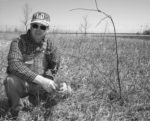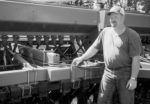Advertise Follow Us
Items Tagged with 'David Dukes'
ARTICLES
40 Legends Of The Past 40 Years
Check out these highly talented folks who’ve had a tremendous impact on no-till since 1972.
Read More
What I've Learned from No-Tilling
Bringing CRP Land Back to Production Fits No-Till System
Read MoreHow Will The New Farm Bill Impact No Tillers?
Since many no-tillers already qualify for payments, you’ll be first on the list for 2002 farm bill payments.
Read More
What I've Learned from No-Tilling
No-Till Success Boils Down To Cost Per Acre
You have to be willing to experiment if you’re going to innovate.
Read More
A Holistic Approach To No-Till Carbon Sequestration
Even if you never earn a dollar from sequestering carbon, it’s still in your best no-tilling interests to do so.
Read More
Remember These Profit-Building Points When Applying Manure To Your No-Tilled Crops
Fall manure application works best and even offers strip-tilling "bonus" benefits.
Read More
Without No-Till, Carbon Sequestration Won’t Work
While there’s plenty of talk about solving global warming concerns by stockpiling carbon in the soil, there are plenty of unanswered questions.
Read More











